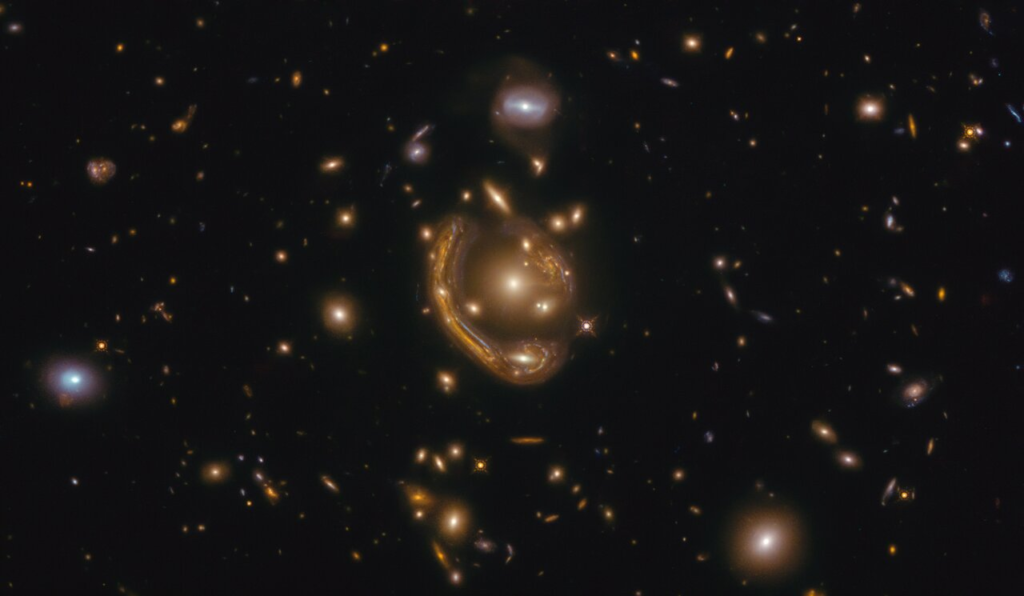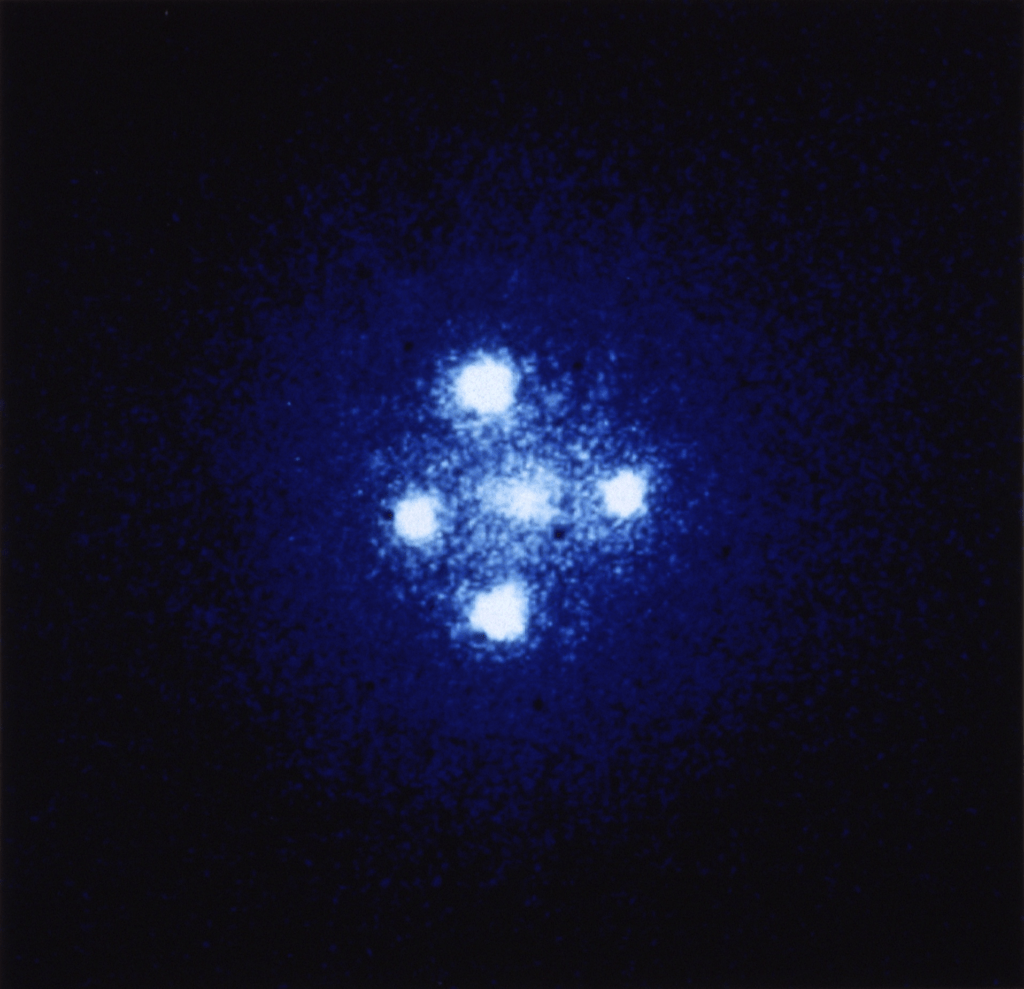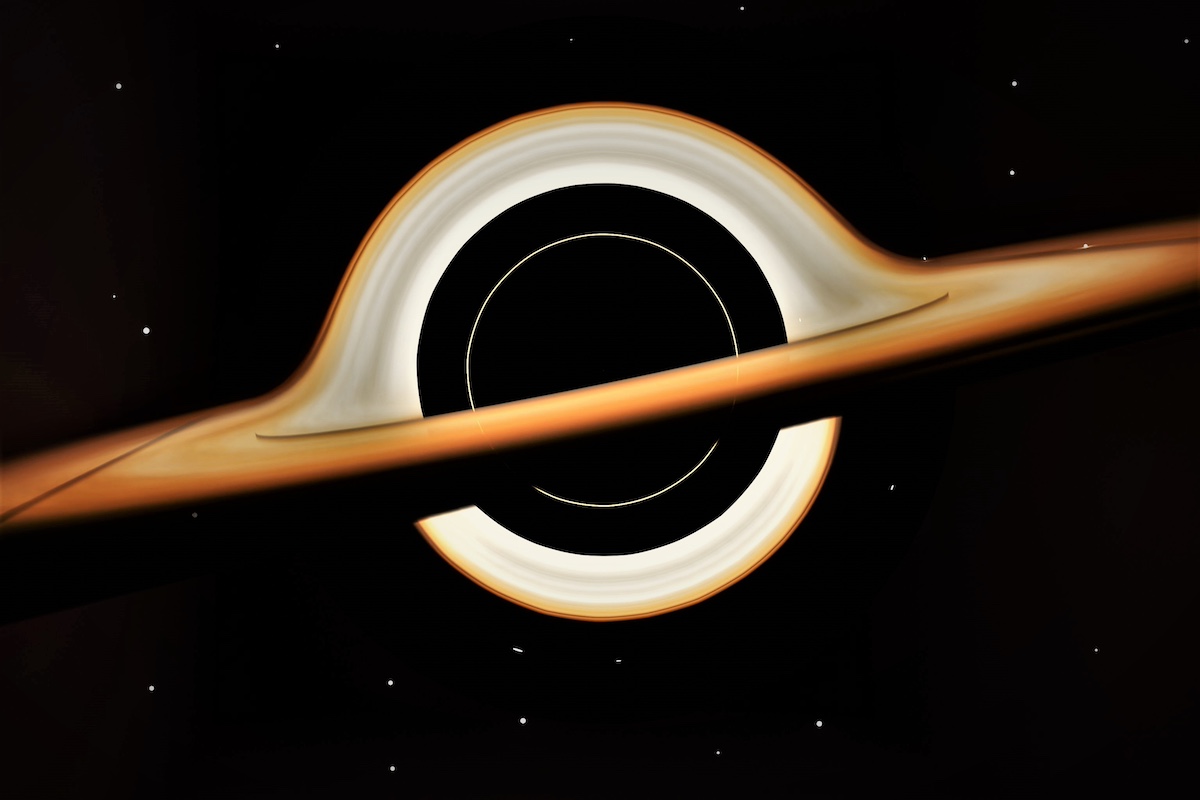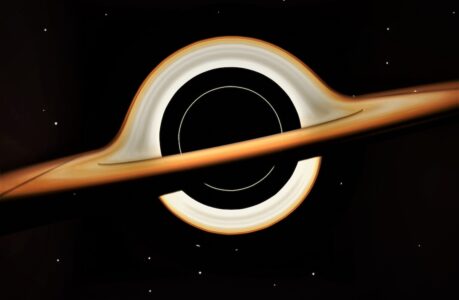Introduction
Black holes have long been a subject of fascination and wonder in the realm of astrophysics. These enigmatic celestial objects possess an extraordinary ability: they can bend light in ways that challenge our fundamental understanding of physics. In this article, we delve into the intricate science behind how black holes bend light and the profound implications it holds for our comprehension of the universe.
The Gravity of the Matter
To comprehend how black holes bend light, we first need to grasp the concept of gravity as described by Albert Einstein’s General Theory of Relativity. This groundbreaking theory revolutionized our understanding of gravitation by replacing Newton’s classical equations with a geometric interpretation of spacetime. According to General Relativity, massive objects like black holes create curves in the fabric of spacetime, analogous to how a heavy ball placed on a rubber sheet causes it to deform.
The Role of Mass
The bending of light by black holes is primarily a consequence of their immense mass. Mass warps the spacetime surrounding the black hole, creating what physicists refer to as a gravitational well. This well is analogous to a funnel, with the black hole at its center, and it exerts a powerful gravitational pull on everything, including light, that comes within its vicinity.
When light travels near a black hole, it follows the curved path dictated by the distorted spacetime, causing its trajectory to deviate from a straight line. This phenomenon is known as gravitational lensing and is the key to understanding how black holes bend light.
Gravitational Lensing: The Cosmic Phenomenon
Gravitational lensing is a fascinating cosmic phenomenon that occurs when the path of light from a distant object is bent as it passes through the gravitational field of a massive object like a black hole. It was first predicted by Einstein’s theory and later confirmed through various observations and experiments.
Types of Gravitational Lensing

Gravitational lensing comes in two primary forms:
1. Strong Gravitational Lensing
Strong gravitational lensing occurs when a massive object, such as a black hole, acts as a powerful lens, bending light to create multiple, distorted images of the same background object. These images can sometimes form beautiful and intricate patterns known as Einstein rings, which are observable through powerful telescopes.
2. Weak Gravitational Lensing
Weak gravitational lensing, on the other hand, involves the subtle distortion of background objects’ shapes and positions due to the gravitational pull of massive foreground objects like black holes. While the effects are less dramatic than strong lensing, they provide valuable information about the distribution of dark matter in the universe.
Real-Life Examples of Gravitational Lensing
To better understand gravitational lensing in action, let’s explore some real-life examples:
- Einstein’s Cross: This famous example showcases strong gravitational lensing, where a foreground galaxy acts as a lens, creating four distinct images of a distant quasar. Each image represents a different path that the quasar’s light took as it was bent by the galaxy’s gravity.

- Hubble’s Frontier Fields: The Hubble Space Telescope’s Frontier Fields program uses the phenomenon of weak gravitational lensing to study distant galaxy clusters. By analyzing the subtle distortions in background galaxies, astronomers gain insights into the distribution of dark matter in these massive structures.
Learn More About Hubble’s Frontier Fields
Black Holes and Gravitational Lensing
Now that we have a grasp of gravitational lensing, let’s delve into how black holes, as one of the most massive objects in the universe, play a pivotal role in this phenomenon.
The Schwarzschild Radius
Black holes are characterized by a unique feature known as the Schwarzschild radius. This critical radius defines the boundary beyond which nothing, not even light, can escape the gravitational pull of the black hole. Anything that crosses this boundary is said to be within the event horizon and is destined to be consumed by the black hole.
The Lensing Effect
As light from distant objects approaches a black hole, it encounters the immense gravitational field within the event horizon. This gravitational field causes the path of light to curve, and it can be so severe that light can loop around the black hole multiple times before escaping. This results in the formation of multiple images of the same object, a phenomenon known as gravitational mirage.
The extent of the lensing effect depends on the mass of the black hole. Supermassive black holes, found at the centers of galaxies, have a more pronounced lensing effect compared to their smaller counterparts.
Observing Black Hole Lensing
Observing the gravitational lensing effect by black holes is a challenging but rewarding endeavor. Astronomers use various techniques, such as monitoring the positions of stars and galaxies near black holes, to detect and study this phenomenon.
Galactic Center Black Hole
One of the most prominent examples of black hole lensing can be found at the center of our Milky Way galaxy, where a supermassive black hole named Sagittarius A* resides. Astronomers have observed stars orbiting around this black hole, and their positions have been meticulously tracked over the years, providing compelling evidence for the existence of Sagittarius A* and its lensing effect on nearby objects.
Gravitational Waves
In recent years, the detection of gravitational waves has opened a new frontier in the study of black holes and their gravitational effects. Gravitational waves are ripples in spacetime caused by the acceleration of massive objects, such as the collision and merger of black holes. The precise measurement of these waves can offer insights into the properties of black holes, including their mass and spin, which can indirectly inform us about their lensing capabilities.
The Cosmic Mirage: Black Hole Imaging
One of the most remarkable achievements in the field of astrophysics is the imaging of a black hole. In April 2019, the Event Horizon Telescope (EHT) collaboration unveiled the first-ever image of a black hole’s event horizon, located in the center of the massive galaxy M87.
The EHT Breakthrough
The Event Horizon Telescope is a global network of radio telescopes synchronized to form a virtual Earth-sized telescope. By combining the data collected from these telescopes, astronomers were able to create an image of the black hole’s event horizon, which had previously been beyond the reach of direct observation.
Imaging a Gravitational Mirage
The EHT image of the black hole in M87 is a testament to the power of gravitational lensing. The intense gravitational field of the black hole bent and distorted the light emitted by the surrounding hot gas, creating a bright, ring-like structure that encircles the dark shadow of the event horizon. This iconic image is a visual representation of how black holes bend light and manipulate our perception of the cosmos.
Explore the Event Horizon Telescope
Probing the Dark Universe
One of the most significant implications of black hole lensing is its role in probing the dark universe. Dark matter, a mysterious substance that makes up a significant portion of the universe’s mass, does not emit, absorb, or interact with light in any way. It is essentially invisible. However, its presence can be inferred through its gravitational effects, including gravitational lensing.
By studying the gravitational lensing of background objects, such as galaxies and quasars, by foreground black holes, astronomers can map the distribution of dark matter in the universe. This provides valuable insights into the large-scale structure of the cosmos and helps us unravel the mysteries of dark matter.
Testing General Relativity
Einstein’s General Theory of Relativity has withstood numerous tests and experiments over the decades, but it continues to be subjected to rigorous scrutiny. Gravitational lensing by black holes offers another testing ground for this fundamental theory.
By precisely measuring the lensing effects of black holes, scientists can verify the predictions of General Relativity, especially in extreme gravitational environments. Any deviations from the theory’s predictions could indicate the presence of new physics or modifications to our understanding of gravity.
Understanding Black Hole Properties
The study of black hole lensing also contributes to our understanding of black hole properties. It allows astronomers to determine crucial parameters such as a black hole’s mass, spin, and the properties of the surrounding accretion disk. These measurements provide insights into the life cycles of black holes and their role in the evolution of galaxies.
Gravitational Wave Astronomy
The field of gravitational wave astronomy has rapidly evolved since the first direct detection of gravitational waves in 2015. Gravitational waves are generated by the acceleration of massive objects, including the collision and merger of black holes. The precise measurement of these waves can reveal vital information about black holes, including their mass and spin.
Gravitational waves emitted by black hole mergers provide a unique opportunity to study the lensing effects of black holes. By analyzing the gravitational wave signals, scientists can infer the presence of black holes and gain insights into their gravitational lensing capabilities.
Future Prospects: Advancing Our Understanding
As technology and observational techniques continue to advance, the study of how black holes bend light is poised to make even more significant contributions to astrophysics and cosmology. Here are some future prospects in this exciting field:
More Black Hole Imaging
The success of the Event Horizon Telescope in imaging the black hole in M87 has opened the door to more ambitious projects. Scientists are already working on improving the resolution of black hole images and capturing images of other black holes in the universe. These efforts will further refine our understanding of black hole lensing.
Precision Tests of Gravity
Advancements in precision instruments and space-based observatories will enable even more precise tests of General Relativity in the extreme gravitational fields near black holes. These tests may reveal subtle deviations from Einstein’s theory and potentially lead to groundbreaking discoveries in fundamental physics.
Gravitational Wave Detectors
The network of gravitational wave detectors, such as the Laser Interferometer Gravitational-Wave Observatory (LIGO) and Virgo, will continue to expand and improve. These detectors will capture an increasing number of gravitational wave signals from black hole mergers, allowing scientists to study the lensing effects of black holes in greater detail.
Unveiling the Secrets of Dark Matter
The combination of gravitational lensing studies and large-scale sky surveys will provide a wealth of data for mapping the distribution of dark matter in the universe. This, in turn, will enhance our understanding of the role dark matter plays in shaping the cosmos and the formation of galaxies.
Conclusion
The phenomenon of how black holes bend light is a captivating aspect of astrophysics that continues to push the boundaries of our understanding. It showcases the intricate interplay between gravity, spacetime, and the behavior of light in the presence of these cosmic behemoths.
From the dazzling images captured by the Event Horizon Telescope to the ongoing advancements in gravitational wave astronomy, the study of black hole lensing offers a window into the most extreme and mysterious regions of the universe. As technology evolves and our knowledge deepens, we can anticipate even more exciting discoveries that will reshape our comprehension of black holes and their enigmatic ability to bend light.
In the quest to unlock the secrets of the cosmos, black holes remain one of the most profound and intriguing phenomena, reminding us of the boundless wonders that await our exploration in the universe.

